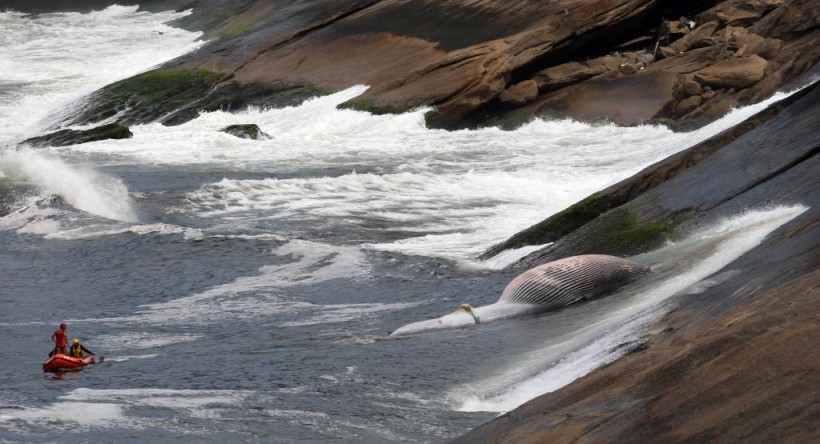Robotic buoys or robotic recorders have been developed by scientists to protect a declining whale population in the Atlantic Ocean from vessel strikes. These lethal whale collisions have been a growing challenge for the US government and animal conservationists in the region.
The vanishing population of the rare North Atlantic right whales has paved the way for the development of robotic technology, which allows the robotic buoys and underwater gliders to record whale sounds in almost a real-time manner.
Robotic Buoys Development

The said technology was developed in a laboratory at Woods Hole Oceanographic Institution in Falmouth, Massachusetts. The project was coordinated between a Cape Cod science and one of the largest shipping businesses in the world.
The said rare whale species are declining to less than 340 worldwide and ship strikes are one of the greatest threats in their existence, according to Phys.org. Once abundant off the Eastern Seaboard, the populations of the North Atlantic right whales have been decimated by conventional commercial whaling and ship collisions for decades.
Vessel strikes have also increased as the number of ships and global maritime activities have increased, with common routes between countries and continents passing through the Atlantic.
Also Read: Shark Swarm Feasting on Humpback Whale Off the Australian Coastline Captured in a New Video
Vessel Strike
A vessel strike or ship collision has been responsible for the deaths of multiple whales each year and across the world's oceans, especially where maritime traffic is active.
The said term refers to the occurrence of any collision between "any type of boat" and a marine animal, which includes not only whales but also dolphins, fish, sea turtles, seals, and sea lions, according to the National Marine Fisheries Service (NMFS) of the Fisheries department of the National Oceanic and Atmospheric Administration (NOAA).
The NOAA Fisheries emphasize vessel strikes can either injure or kill marine life, and collisions can transpire anywhere where the paths of vessels and a marine animal crosses. These oceanic incidents are compared to road traffic accidents on land during animal crossings.
The US fisheries agency added these incidents mostly occur in the areas of the seas or oceans where there are a large number of marine animals and high vessel traffic.
According to the NOAA Fisheries vessel strikes are common in the following areas surrounding the coastal waters of the US:
- Alaska
- New England
- Mid-Atlantic
- Pacific Islands
- Southeast US
- West Coast
Current Conservation Efforts
Prior to the development of robotic buoys, the NOAA Fisheries various measures to mitigate the number of vessel strikes and protect the declining whale population in both the North Atlantic Ocean and the East Pacific Ocean.
These efforts include the implementation of a 'mandatory vessel speed rule' in 2008 which aims to reduce ship collisions against North Atlantic right whales. Most vessels with a size of over 65 feet are required to slow their speed along the East Coast at a particular time of the year, according to the rule published in the Federal Register, the daily journal of the US government.
Meanwhile, related regulations have been imposed within 200 nautical miles of Alaska since 2001. Under the measures, the US federal law requires any vessels to maintain a distance of at least 100 years from humpback whales in Alaskan waters.
In addition, the NOAA Fisheries, along with the U.S. Coast Guard, federal agencies, and businesses from the commercial shipping industry have collaborated their efforts for vessel strike reduction.
These measures include collection and analysis of vessel strike events; outreach, and education' aerial surveys and monitoring, and identification of new solutions.
Related Articles: Tour Boat Hits Whale Off the Coast of Mexico; Six People Injured
© 2024 NatureWorldNews.com All rights reserved. Do not reproduce without permission.



![Roundworms with Short Memories 'Stop Forgetting' When Frozen or Given Lithium [Study]](https://1471793142.rsc.cdn77.org/data/thumbs/full/70295/280/157/50/40/roundworms-with-short-memories-stop-forgetting-when-frozen-or-given-lithium-study.jpg)

